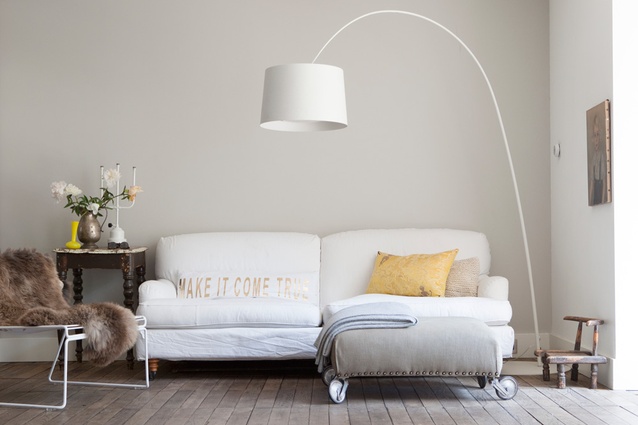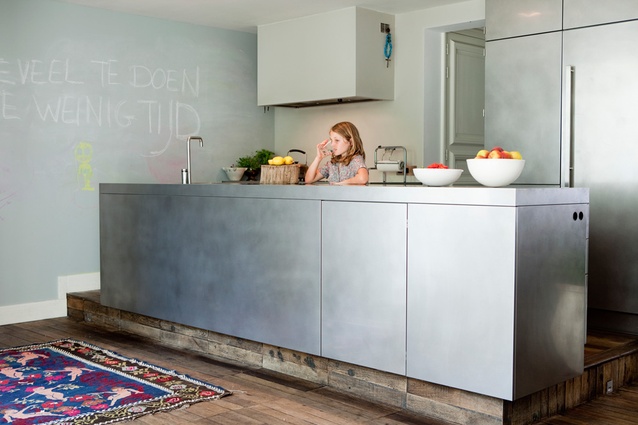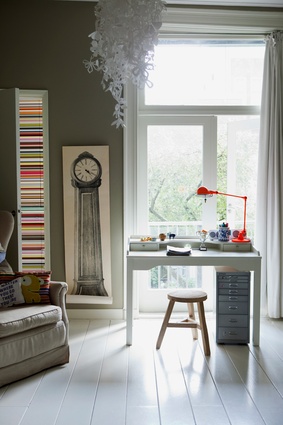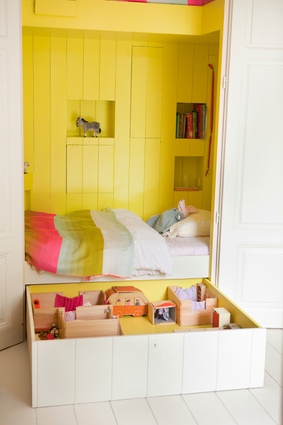Amsterdam canal-side house
An “overly expensive aquarium” is how stylist Jessica Bouvy describes the Amsterdam canal-side house where she used to live with her husband and two daughters. She much preferred the countrified lane behind her house in the Amstelveld area, where a ground-floor flat stood vacant. Each time she cycled past, she could see an apple tree in the garden through the windows. “I envisaged us sitting there barefoot in the grass,” says Bouvy. “One day I saw a contractor working on the apartment. I was able to look around and saw a cramped, dated space; lowered ceilings and masses of chipboard. But also the potential to transform it into a real home.” That one look was enough for Bouvy and her husband Jaap Mos to buy the apartment.
With help from architect friend Hans Kodde, the ground floor underwent a drastic transformation. Partitions were opened up or re-positioned, the lowered ceilings removed and a conservatory built, so that the house was suddenly bathed in light. “I wanted something industrial, with lots of steel,” recounts Bouvy, “but the architect advised against it. ‘Heating costs will bankrupt you,’ he said.”
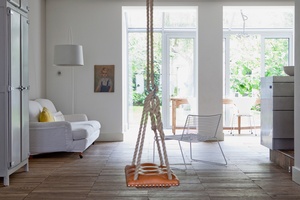
Wherever possible, original features were restored to their former glory. Beautiful shutters were discovered hidden behind triplex partitions. Bouvy commissioned tall panelled doors in the same style, which now shield the pantry and a workplace from view. In contrast, a furniture maker designed a kitchen of brushed stainless steel. “I like the combination of warm and cold materials. If that’s in balance, you have a basis on which to create atmosphere by the addition of a few quirky details. ‘Rough luxury’ as the English so aptly call it.”
A couple of years later, it was time to tackle the top floor. Whereas downstairs had primarily been about demolition, upstairs was all about construction. A family bathroom and a master bedroom were realised, but most thought went to the family’s daughters. “We divided one front and back room by installing a partition,” says Bouvy. “We then built a box bed from MDF that we designed ourselves, complete with useful alcoves and shelves, in each room. Antique doors were added to the front, so it looked as though the box beds had always been part of the house.”
The former stairwell has been considerably modernised. It was opened up to accommodate a clever construction: a floor-to-ceiling steel bookcase with a flight of stairs alongside, which created a sea of light as well. The only thing that still separates the two floors is a restrained glass dividing door, which bears a text that Bouvy saw in the Peggy Guggenheim Museum in Venice: “Changing place, changing time, changing thoughts, changing future.”
Apart from the house renovation, Bouvy was primarily moved by the garden. “That apple tree was so picturesque, I didn’t actually look further,” she says. “I thought, we’ll sow some grass seed and that’ll do. But a landscape architect friend persuaded me to make a design first and I’m glad we did. Optimal use is now made of the available space.”

